► Hybrid RAV4 tested – no diesel planned
► New styling, changes across the board
► Below-par interior tech
Producing a medium-sized SUV that stands out from the crowd may seem like an impossible task in today’s market, but Toyota has had a damn good go with its current-generation RAV4. It’s good enough to make it onto our list of the best hybrid cars on sale today.
The previous version may have had its trick plug-in hybrid hardware hidden up its sleeve to help lower running costs, but it was wrapped up in such a dreary package the RAV4 Hybrid never made it onto anyone’s radar.
The current model is built on a fresh global architecture GA-K platform, and is styled in that angular, almost cartoon-like form that only Japanese designers seem to have truly perfected.
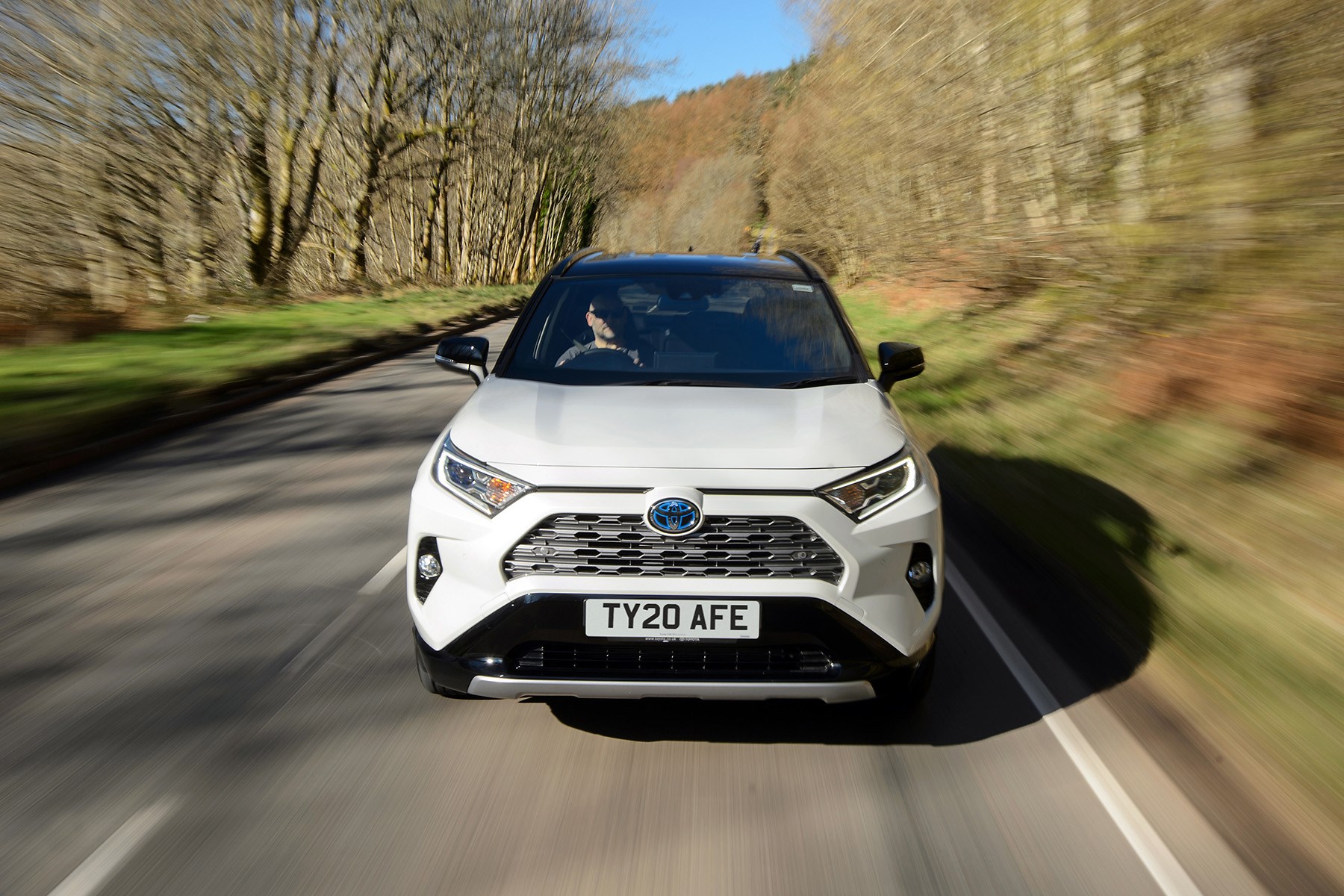
Curious? So you should be, as it’s shaping up to be a welcome antidote to the slew of platform-sharing and predominantly diesel SUVs that are currently dominating UK roads – and sales charts.
Having said that, there is a badge-engineered RAV4 available in the form of the Suzuki Across. If for some reason, you don’t want a Toyota badge or dealer support.
Self-charging hybrid only – but there must be a diesel version on the way?
Nope, it really is hybrid all the way for the RAV4 with absolutely no plans for a diesel or even a pure petrol version in the UK (all-electric may be a different story, but currently there are no plans for one).
For now, you’d better get used to the 2.5-litre Hybrid Dynamic Force engine, available with 219bhp in the all-wheel drive model and 215bhp in the front-wheel drive version. Said output is split courtesy of 176bhp from the 2.5-litre petrol with the rest arriving via the electric motors.
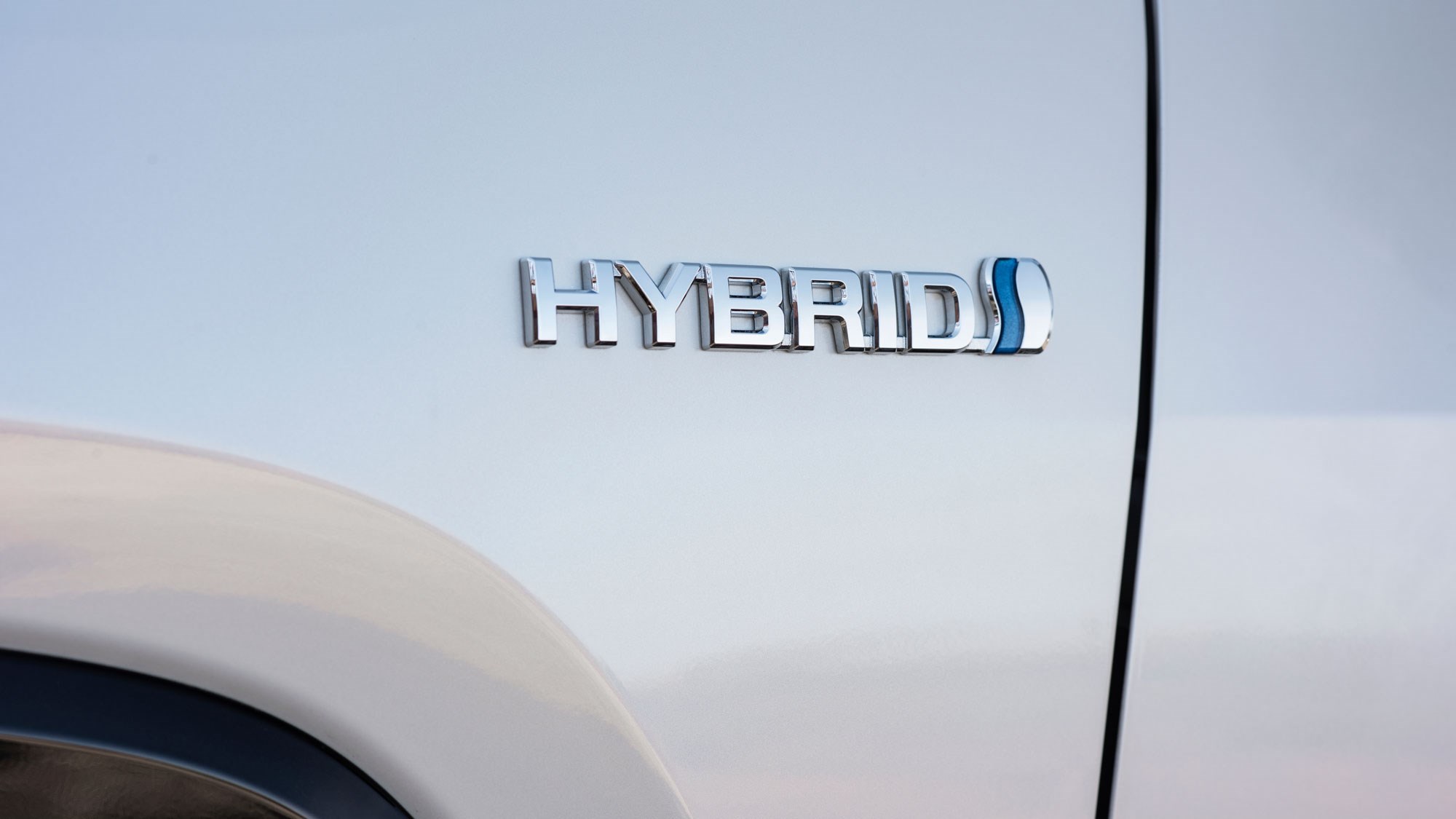
We’ve tested the front wheel drive model but all-wheel drive models come with a 40kW motor on the rear axle. This latest system can send up to 100% of the engine’s power to the front wheels, and 80% to the back depending on which has the most traction.
The minor increase in power on this model also results in a slightly quicker 8.1 second 0-62mph time, but there’s a negligible dip in fuel economy and a rise of CO2 output by a couple of grams.
Unsurprisingly, you’d be hard pressed to tell the difference between the real-world acceleration on offer between the two drive versions. Unlike the previous RAV4 hybrid, both feel surprisingly punchy, with more than enough outright power to reach motorway speeds quickly and safely.
The front-wheel drive model can sometimes struggle to make a clean getaway when the road isn’t bone dry, so the all-wheel drive version could well be worth a look if you live somewhere prone to wetter weather conditions.
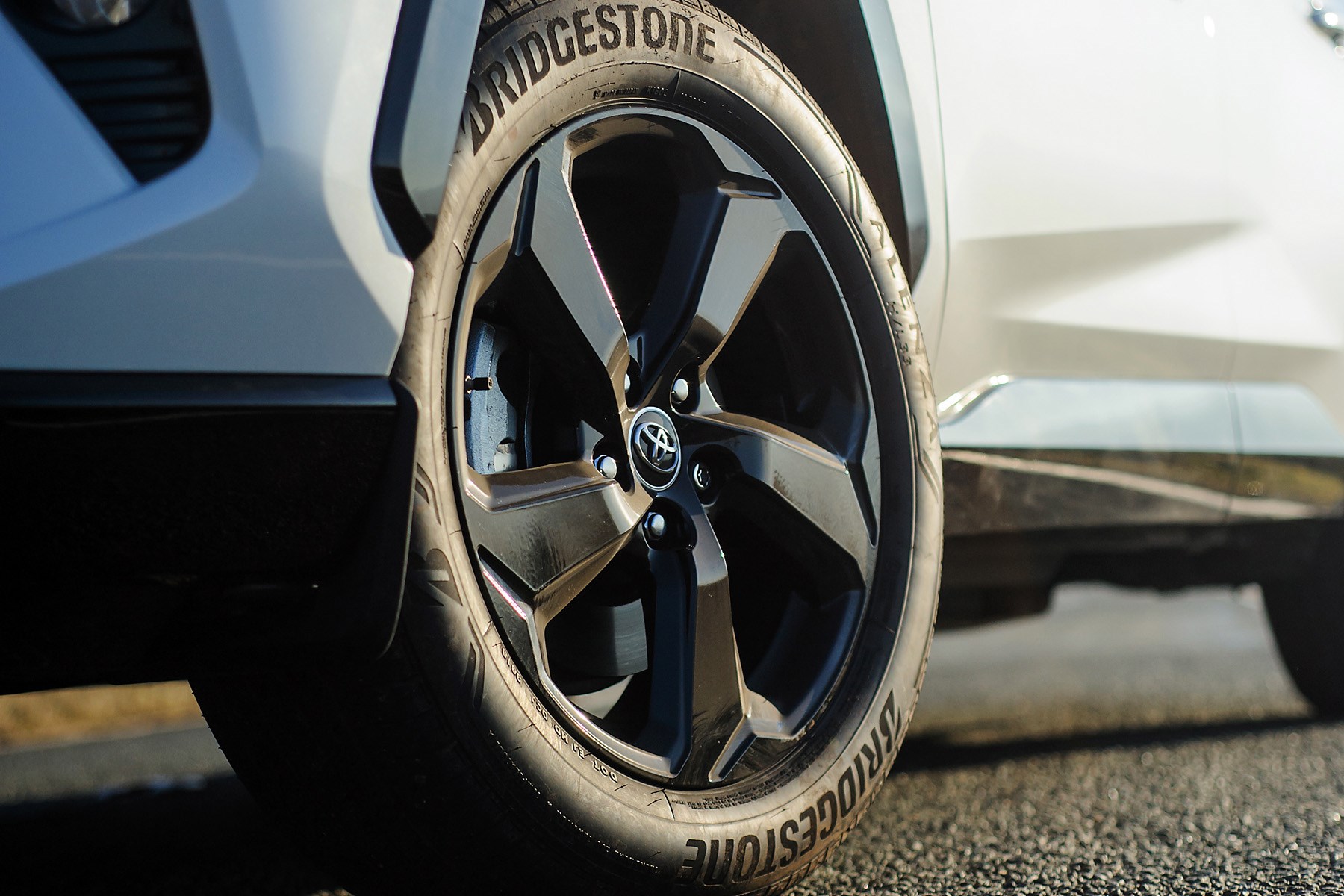
Fuel economy is naturally going to be a big talking point given the absence of diesel, with the standard front wheel drive car claiming an average of up to 49.5mpg and the AWD dipping slightly to 48.7mpg.
Plug-in Hybrid on the way in 2021
A PHEV version uses the same 2.5-litre engine but adds a bigger battery pack to combine a total power output of 302bhp, while also being able to travel around 37 miles on battery power alone. And with a 0-62mph time of 6.2 seconds, it’s quite a bit quicker than the regular model.
Tested: Plug-in hybrid SUVs (XC40, Kuga, 3008)
We’re yet to drive this version, but it’s set to take on plug-in hybrid versions of the Vauxhall Grandland X and Peugeot 3008, which come with 296bhp each.
Ok, so back to the hybrid – does the powertrain work in the real world?
It’s punchy enough, that’s for sure. Even in the (slightly) less powerful front-wheel drive version real-world acceleration is linear and surprisingly brisk thanks to that electric assistance. Foot down and 0-62mph comes up in just 8.1 seconds.
If you’re used to effortless diesel torque and flexibility, however, it will take some getting used to. The electric motor does its best to make up for lack of torque from the non-turbo 2.5-litre engine, but it can only do so much.
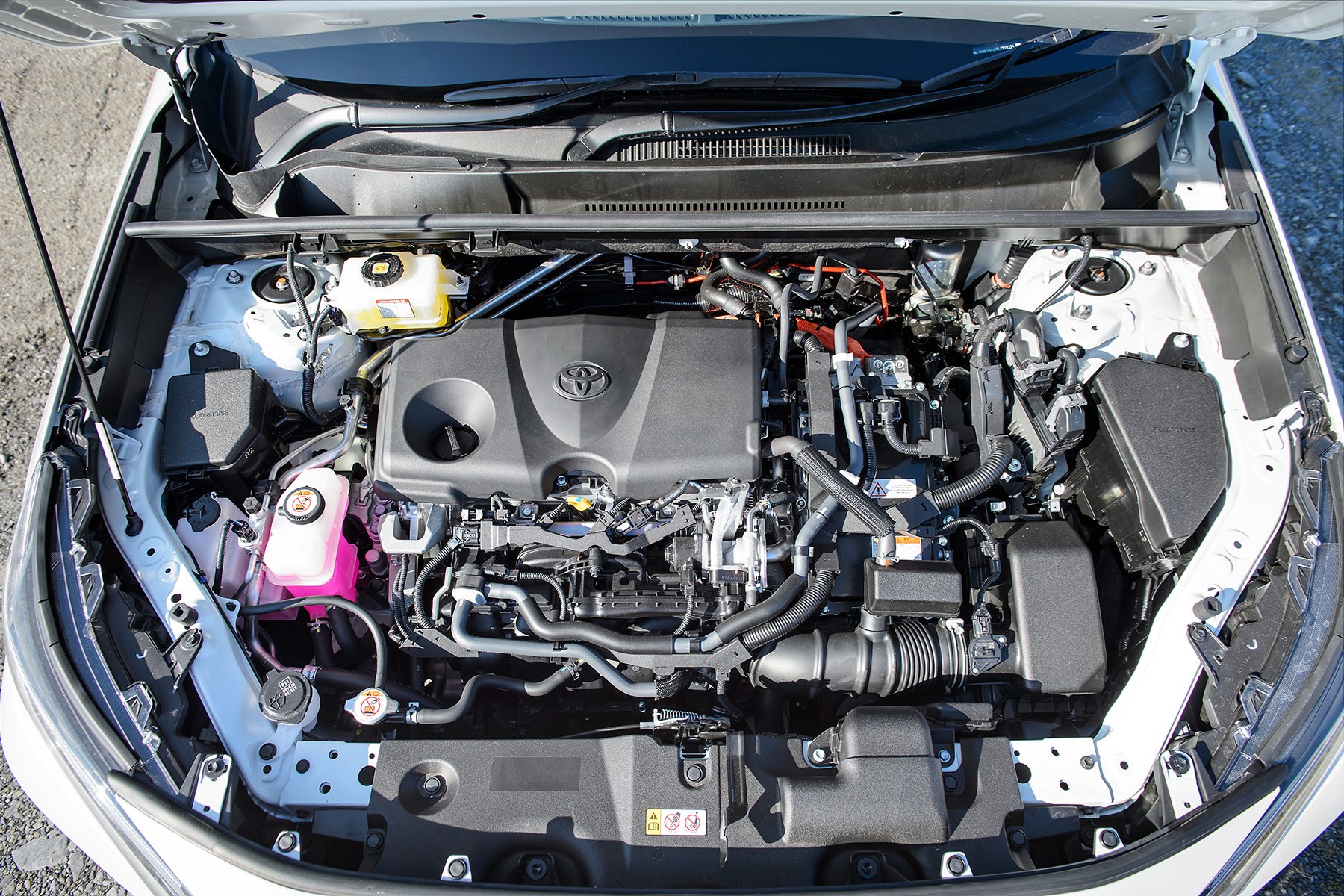
As a result, meaningful progress is accompanied with the familiar raucous hum that all CVT powertrains are afflicted with. It’s a shame as it spoils what is otherwise a refined driving experience, especially when cruising. There’s next to zero tyre roar and although wind buffeting is noticeable, it’s no doubt highlighted by the lack of other background noise.
Predictably, the RAV4 Hybrid isn’t the most exciting thing to drive with steering devoid of feel (so much so that you can barely feel the front wheels scrabbling under power) and plenty of nose dip when you lean on the grabby brakes.
It’s unfair to put too much emphasis on such gripes, however, as – when driven normally – the RAV4 feels planted and predictable with little body roll (the body is 57 percent more rigid than the previous car) despite the softly sprung suspension.

The latter also means the ride is comfy and composed for the most part, only struggling slightly over large potholes or expansion joints in the road. Regardless of claims that the manufacturer may make about the RAV4’s ‘sportiness’, overall it feels markedly more relaxed than most rivals despite the noisy engine.
What’s the RAV4’s cabin like?
Spacious is the first word that springs to mind. If you’re after an SUV that provides exceptional practicality there are far worse options out there. The RAV4 feels airy and light up front, with ample rear leg and headroom even with the driver and passenger seats pushed reasonably far back.
What is a hybrid car?
The small central tunnel running through the car also means that – even on four-wheel drive models – there’s plenty of legroom for middle seat passengers. Meanwhile, lateral space between those on the rear pews has been increased by 49mm over the old car, meaning less elbowing each other in the ribs and more space for Isofix child seats.
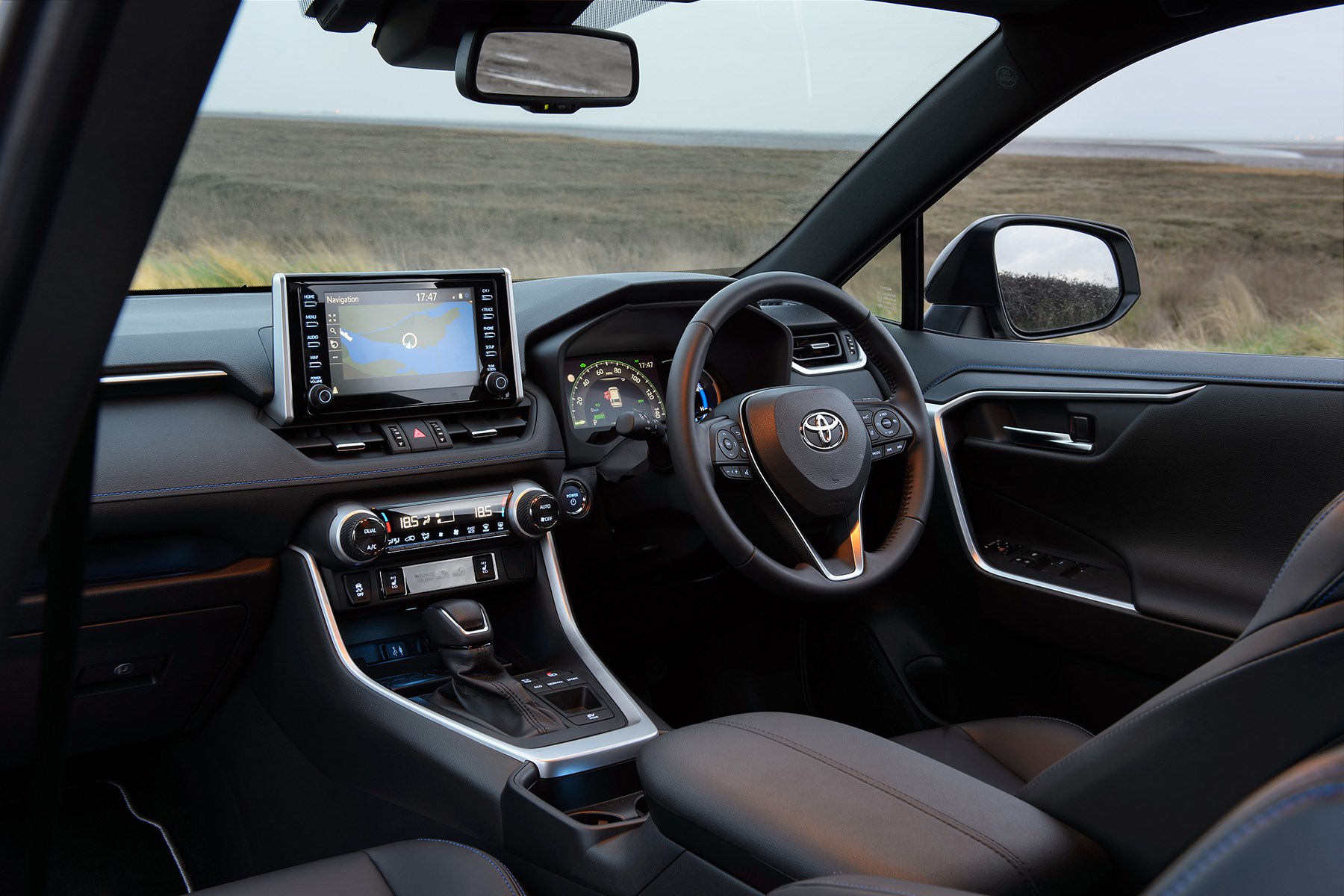
Bootspace, too, is impressive, measuring up at 580 litres with the rear seats in place and 1,690 litres with them down – larger than many rivals.
As far as the interior goes, however, the amount of space on offer is the main highlight. That’s not to say there’s anything particularly wrong with the RAV4’s cabin, it just doesn’t stand out against its rivals all things considered.
Like any Toyota, everything is very well screwed together and feels like it’ll last longer than the five-year warranty, but there’s plenty of cheaper plastic on show and some of the layout decisions (such as the prominence of the passenger airbag display) feel poorly judged.
We do like some of the details though, with rubberised buttons and chunky rotary controls that feel very nice, along with blue stitching across the dash on some trims.
Onboard tech – updated in 2020
When launched, the RAV4’s infotainment system was a disappointment. Toyota has had a long time to improve on what’s come in previous generation models yet the end result lagged well behind the best in class.
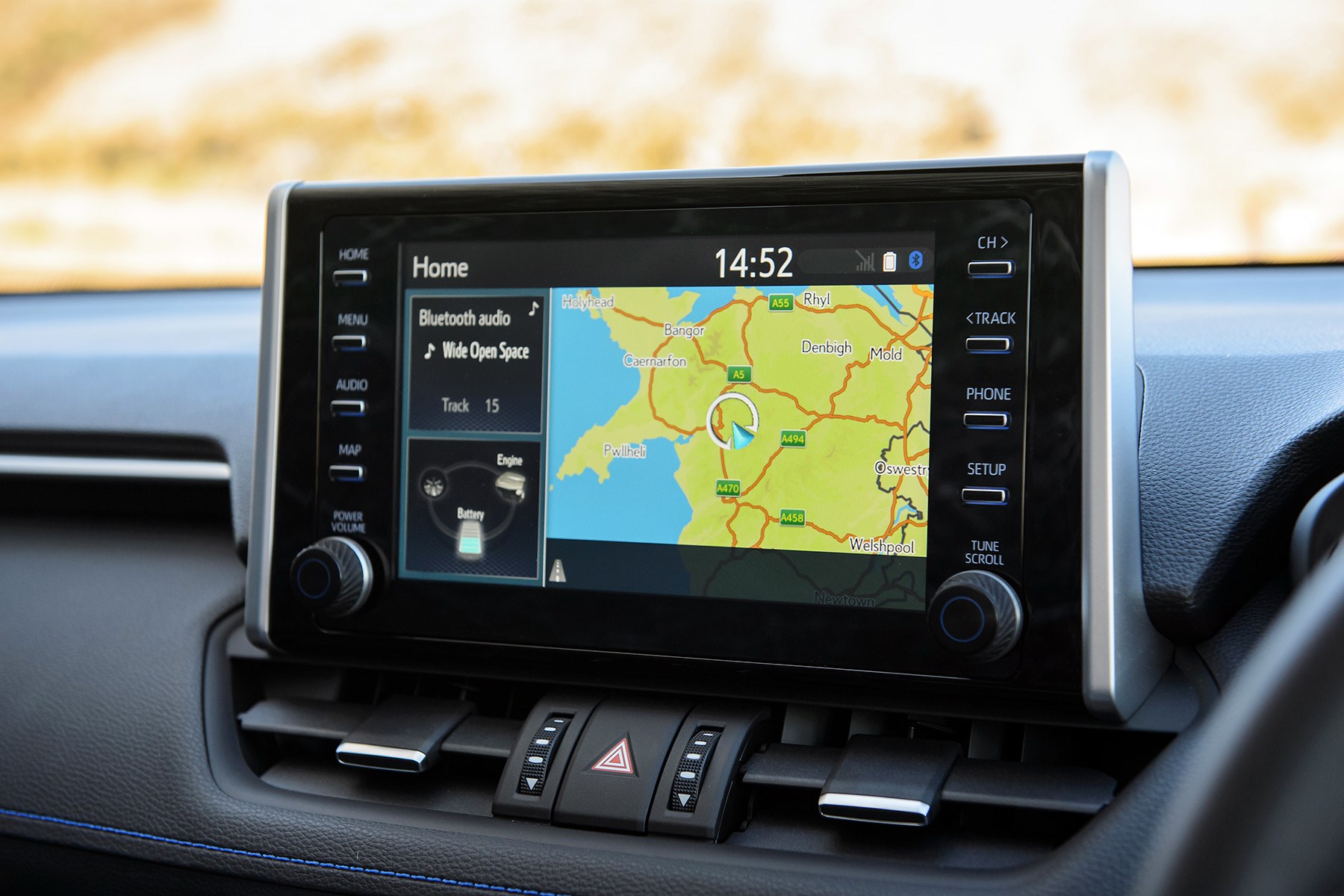
Apple CarPlay (or Android Auto) is standard with the 8.0-inch Touch 2 infotainment system, which also features nine speakers as part of the JBL 800W sound system on higher specification models. That upgrade is also optional on lower-spec versions, but all RAV4s include smartphone integration and navigation.
If you’re buying a nearly-new car or one that’s been in stock for a while it may still have the earlier system, which lacks smartphone integration and feels very at odds with the age of the car.
Toyota’s Safety Sense technology has been upgraded for the RAV4, with a high-definition camera and improved radar technology, resulting in the pedestrian and cyclist detection technology now capable of operating at night (when the majority of accidents happen).
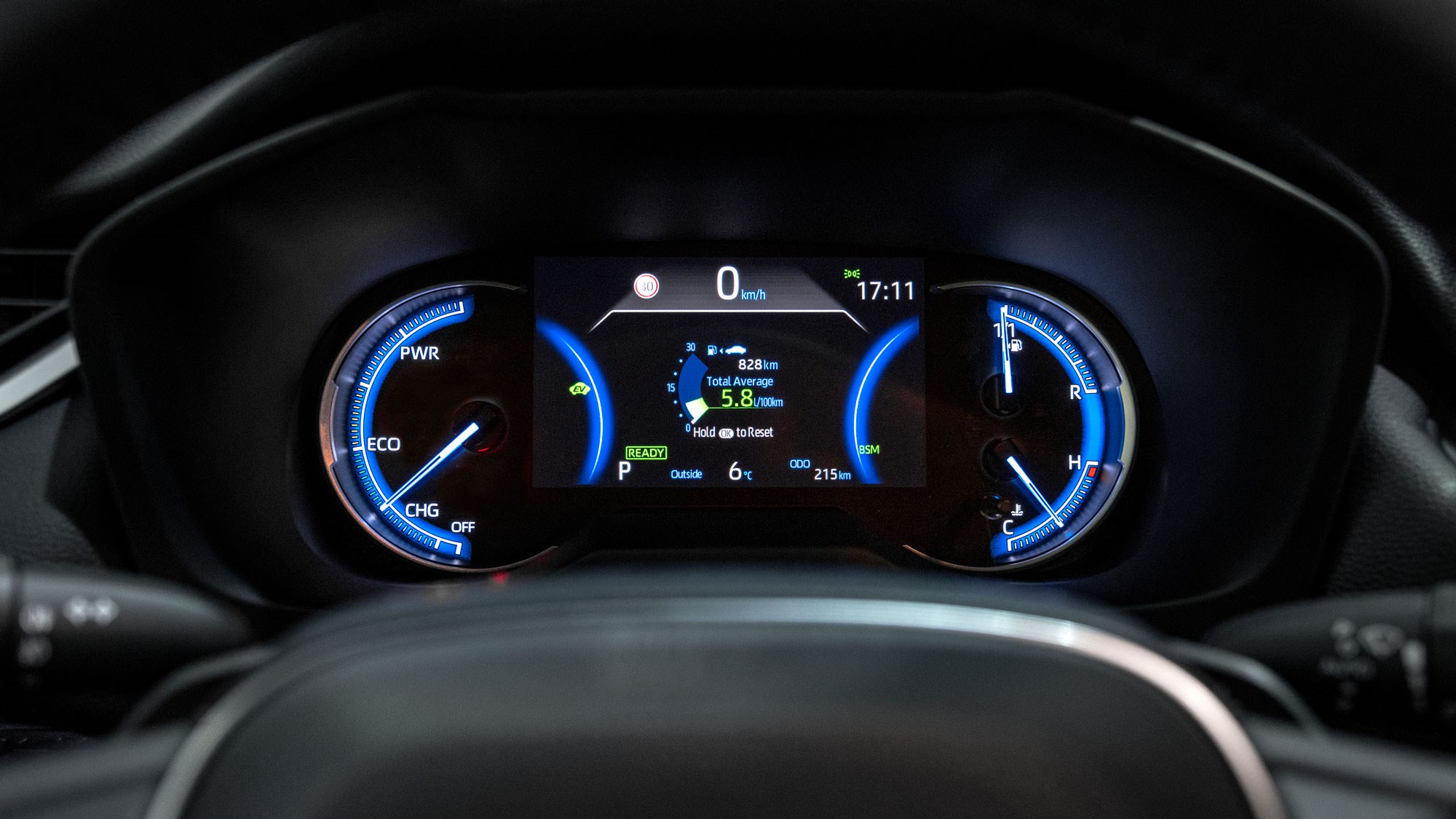
Said safety tech is fitted as standard across a four-strong range of trim levels (Icon, Design, Excel and Dynamic – Design expected to be the most popular), as is a rear-view camera and parking sensors, keyless ignition, LED headlights, an 8.0-inch multimedia touchscreen, a 7.0-inch digital dashboard display and a long list of additional safety tech included in the Safety Sense bundle.
Connected services – such as Send to Car Navigation, Find my Car, Driving Analytics and Maintenance Reminder – are also being rolled out for the first time on the RAV4.
Is the Toyota RAV4 any good off-road?
The four-wheel drive version should certainly be able to hold its own on a mild off-road course thanks to the raised ground clearance and all-new Trail Mode setting. This uses an electronic limited-slip differential to automatically brake any wheel and apply the power to the opposite side, thus giving greater traction.
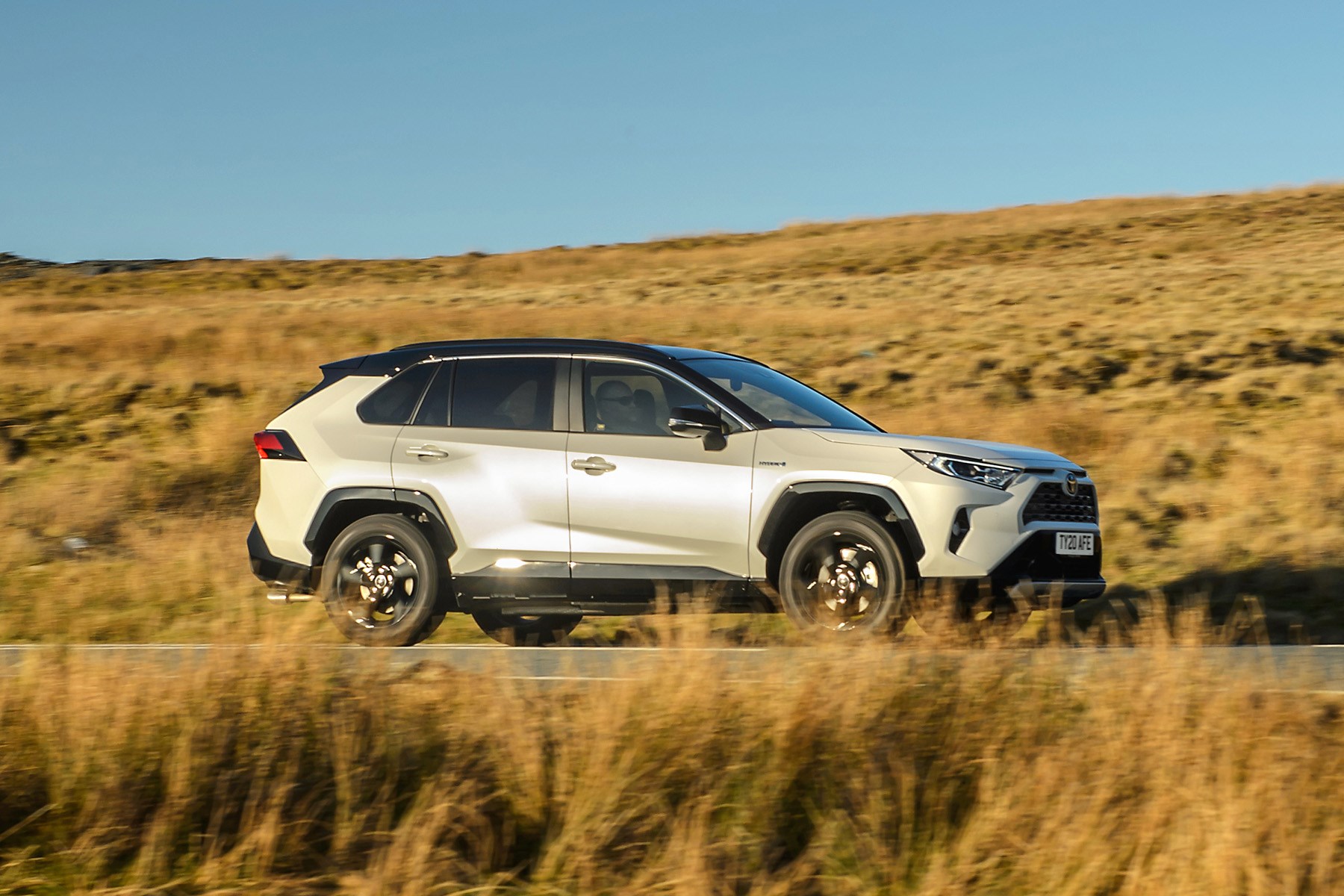
Such an addition is unlikely to make the RAV4 the default choice for mud-plugging farmers, yet its capability will almost certainly outstretch the requirements of 99% of buyers.
Toyota RAV4 Hybrid: verdict
There’s plenty to like about the new Toyota RAV4, from its economical low CO2 hybrid powertrain to the impressive practicality, standard-fit safety kit and near-faultless reliability record. The design is at least a talking point now, but it’s a shame, then, that the unpolished hybrid powertrain lets the side down, meaning it doesn’t quite hit the heights of class leaders in an ultra-competitive market segment.
So it’s certainly better, but hasn’t quite weaved its way silently to the front of the pack yet.
Alternatively, another hybrid SUV worth looking at is the Honda CR-V, which also comes with the option of having seven seats.
Model tested: RAV4 Design 2.5 Hybrid CVT AWD-i